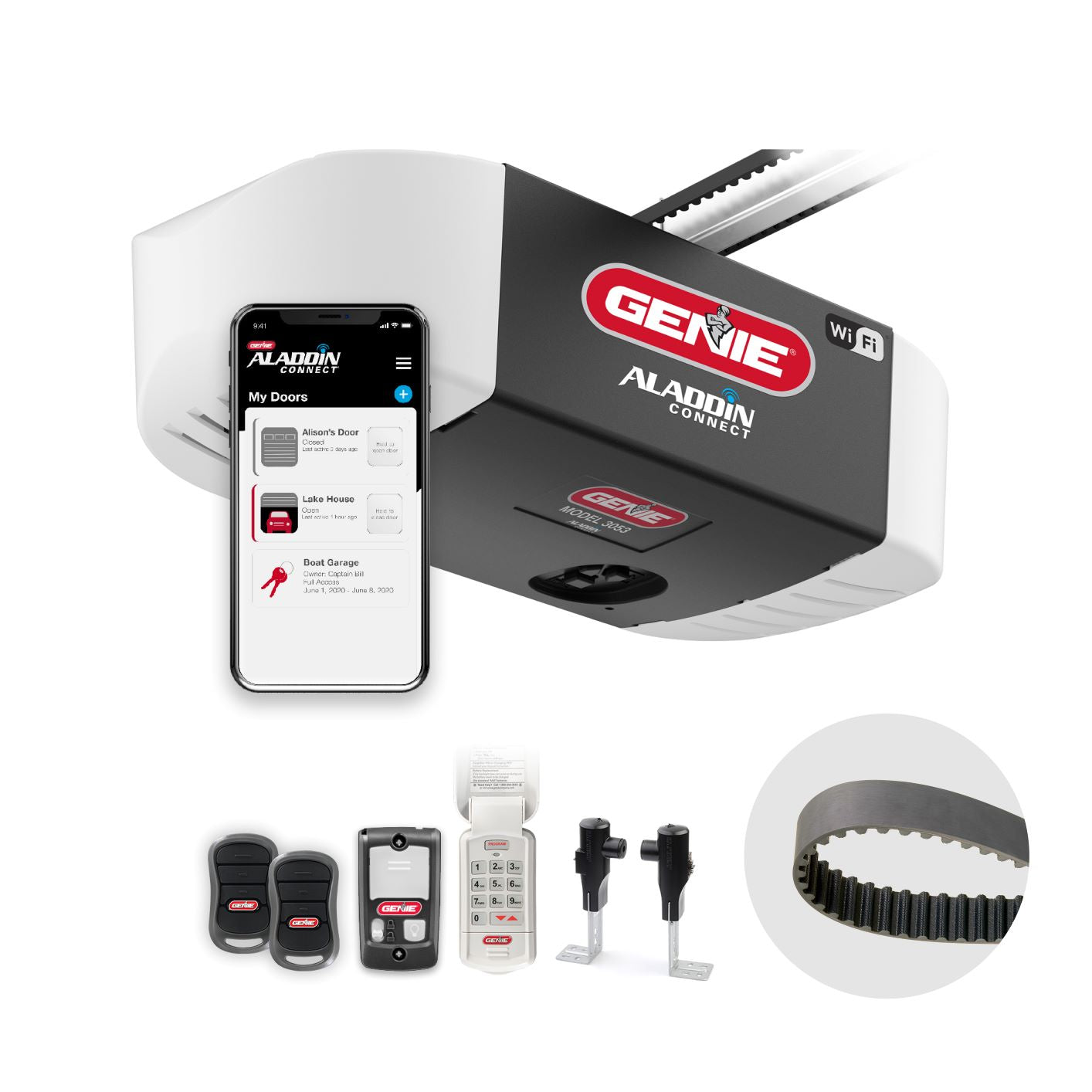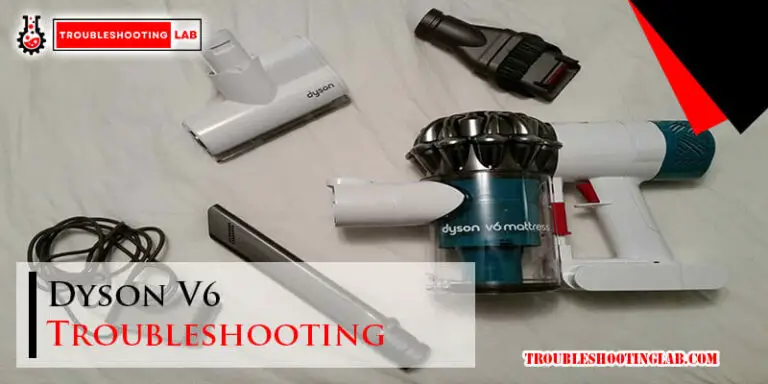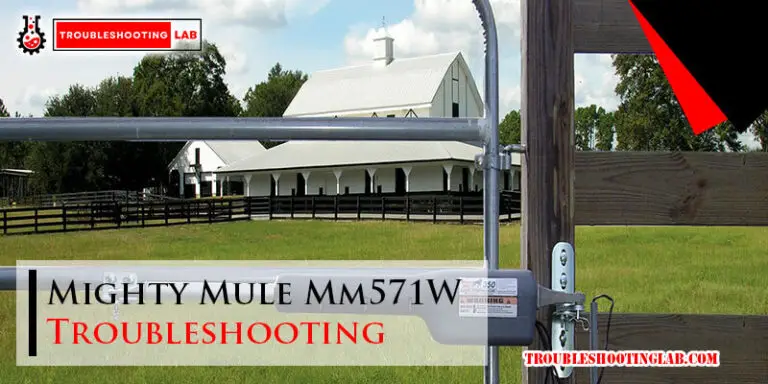Genie 3053 Troubleshooting: Quick Fixes for Common Issues
Is your Genie 3053 garage door opener giving you trouble? You’re not alone.
When something as essential as your garage door stops working, it can throw off your entire day. The good news? Most problems with the Genie 3053 can be fixed quickly once you know what to look for. In this guide, we’ll walk you through the most common issues and their simple solutions.
Whether it’s an unresponsive remote, a stuck door, or strange noises, we’ve got you covered. Stick around, because by the end of this article, you’ll feel confident tackling the problem head-on and getting your garage door back in action. Ready to fix it? Let’s dive in!
Common Problems With Genie 3053
The Genie 3053 is a reliable garage door opener for many users. It offers smooth operation and essential safety features. But like any device, it can face issues over time. Understanding these problems helps in resolving them effectively. Let’s explore some common issues with the Genie 3053 and ways to address them.
1.Garage Door Not RespondingSometimes, the Genie 3053 may not respond to the remote. This could be due to dead batteries in the remote control. Another reason might be a disrupted power supply to the opener. Loose or damaged wiring can also cause this issue. Check these areas to identify the root cause.
2.Unusual Noises During OperationLoud or strange noises can occur during door operation. This often points to a lack of lubrication on moving parts. Worn-out rollers or misaligned tracks can also be the reason. Regular maintenance helps prevent these issues.
3.Door Reverses Before ClosingThe door reversing before closing is a safety mechanism. This happens if the safety sensors are misaligned or blocked. Dust, dirt, or debris on the sensors can also trigger this problem. Cleaning and realigning the sensors usually resolves the issue.
4.Remote Control Range IssuesSometimes, the remote control may work only at close range. This can result from interference from nearby devices. Weak remote batteries can also cause limited range. Ensure the batteries are fresh and check for interference sources.
5.Door Opens but Does Not CloseThe Genie 3053 might open the door but fail to close it. This might happen if the safety sensors are blocked or damaged. Faulty wiring or an issue with the control board can also lead to this problem. Inspect the sensors and connections to fix the issue.
6.Flashing LED Lights on the OpenerFlashing LED lights often indicate an error or malfunction. Refer to the manual to decode the blinking pattern. It might point to sensor issues, misaligned parts, or motor problems. Addressing the specific error code can solve the problem quickly.
7.Slow Door MovementIf the garage door moves slower than normal, it may need adjustments. The issue could stem from the opener’s force settings or worn-out parts. Inspect the tracks, rollers, and springs for wear or dirt buildup. Adjusting the force settings may also help.
Garage Door Not Responding
Few things are more frustrating than pressing your garage door remote only to be met with silence. A non-responsive Genie 3053 can disrupt your day and leave you wondering what went wrong. Before you panic, there are a few simple steps you can take to troubleshoot the issue and get your garage door working again.
Checking Power Supply
First, ensure your Genie 3053 has power. Look at the motor unit—are the indicator lights on? If not, check the electrical outlet and make sure it’s supplying power.
Try plugging another device into the same outlet. If it doesn’t work, the issue might be with the outlet itself, and you may need to reset the breaker or contact an electrician.
If the outlet works, inspect the power cord. Is it securely plugged in or damaged? A loose connection or frayed cord could be the culprit.
Inspecting Remote Batteries
Dead batteries in your remote are often the simplest explanation. Open the remote and check the batteries. If they’re old or corroded, replace them with fresh ones.
Even new batteries can sometimes shift out of place. Make sure they’re seated correctly in their slots. A small adjustment can make all the difference.
If you’ve swapped the batteries and the remote still doesn’t work, try testing it with another remote if you have one. This helps rule out whether the remote itself is defective.
Reprogramming The Remote
If the remote isn’t communicating with the motor unit, reprogramming it might solve the issue. Locate the “Learn” or “Program” button on your Genie 3053. It’s usually on the motor housing.
Press and hold the button until the indicator light turns on. Then, press the button on your remote. The indicator light should blink, signaling a successful connection.
If it doesn’t blink, try the process again, ensuring you’re within range. Sometimes the signal can be blocked by objects or walls, so reposition yourself if needed.
These troubleshooting steps are straightforward, but they’re also easy to overlook in the rush of daily life. Have you ever fixed a garage door issue simply by changing the batteries or securing a loose cord? Don’t underestimate these small fixes—they could save you time and money!
Door Reverses Before Closing
Few things are more frustrating than a garage door that refuses to close properly. If your Genie 3053 garage door reverses before fully closing, it’s not just an inconvenience—it can leave your garage unprotected. The good news? This issue is often fixable with a few simple troubleshooting steps. Let’s break it down so you can solve the problem and get your garage door working smoothly again.
Adjusting The Close Limit
The close limit tells your garage door how far it should travel before stopping. If it’s set incorrectly, the door might think it’s hitting an obstacle and reverse. Adjusting this setting is often the first step to resolving the issue.
Start by locating the close-limit adjustment screws on your Genie 3053 opener. These are typically labeled and easy to spot on the motor unit. Turn the screw slightly in the direction that allows the door to close further. Test the door after each adjustment to see if it closes fully.
Don’t over-adjust. Small tweaks are key here. If you’re unsure, refer to your Genie 3053 manual for specific guidance. Have you checked your close limit recently?
Clearing Obstructions
Even tiny debris can trigger your garage door’s safety mechanism and cause it to reverse. Check the path of the door carefully for any obstructions. Dirt, leaves, or even a stray tool could be the culprit.
Run your hand along the tracks to feel for anything stuck. Also, inspect the bottom edge of the door for blockages. If you find anything, clear it away and test the door again.
Keeping the area clean and free of clutter can prevent this issue from recurring. When was the last time you gave your garage a thorough sweep?
Testing Safety Sensors
The Genie 3053 comes equipped with safety sensors that detect objects in the door’s path. If these sensors are misaligned or dirty, they can send false signals, causing the door to reverse. Checking the sensors is a quick and crucial step.
Inspect the sensors on both sides of the door, near the bottom of the tracks. Make sure they’re clean and aligned. A solid green or red light typically indicates proper alignment, but if the light is blinking, you’ll need to adjust the sensors until they line up.
Wipe the sensors gently with a soft cloth to remove dust or dirt. Don’t forget to test the door after cleaning and aligning them. Have you noticed any blinking lights on your sensors?
Troubleshooting your Genie 3053 doesn’t have to be overwhelming. By adjusting the close limit, clearing obstructions, and testing the safety sensors, you can likely resolve the issue of the door reversing before closing. Take it one step at a time, and your garage door will be back to working order in no time.

Credit: store.geniecompany.com
Unusual Noises During Operation
Is your Genie 3053 garage door opener making strange noises during operation? Hearing grinding, squeaking, or rattling can be frustrating and even alarming. These unusual sounds often point to specific issues that can be resolved with a bit of troubleshooting. Here’s how you can address the problem step by step.
Lubricating Moving Parts
Dry or stiff moving parts are a common cause of weird noises. Check the rollers, hinges, and springs for signs of wear or dryness. Use a silicone-based lubricant to coat these components lightly. Avoid over-lubricating, as that can attract dirt and lead to more problems. Keep in mind that regular lubrication—every six months—is key to quiet, smooth operation.
Inspecting The Drive System
The drive system could also be the culprit. If you hear grinding or clicking, examine the chain or belt for damage. A loose chain can slap against the rail, creating a rattling sound. Tighten the chain slightly, but don’t overtighten—it needs a little slack to function properly. If you’re dealing with a belt drive, ensure the belt is aligned and not frayed.
Tightening Loose Hardware
Loose nuts, bolts, or brackets can vibrate and create rattling or buzzing noises. Use a wrench or screwdriver to check the hardware on the opener and door. Pay close attention to mounting brackets and the rail system. Tighten anything that feels loose, but avoid overtightening to prevent stripping the threads. A small adjustment can make a big difference in noise reduction.
Tackling these three areas can help you pinpoint and solve the issue of unusual noises. Which of these steps worked for you? Let us know in the comments!
Door Moves Unevenly
Have you noticed your Genie 3053 garage door moving unevenly? This issue can be frustrating and potentially dangerous if left unresolved. An uneven door might signal wear and tear, alignment problems, or even faulty components. Let’s walk through some practical steps to troubleshoot and fix this problem.
Checking The Tracks
Start by inspecting the tracks on both sides of the garage door. Dirt, debris, or even slight bends can cause the door to move unevenly. Use a damp cloth to clean the tracks and remove any obstructions.
If you spot dents or bends, gently straighten them using a rubber mallet. Be careful not to damage the tracks further. Ask yourself: are the tracks securely fastened to the walls? Loose screws can also throw off the door’s movement.
Inspecting The Springs
Garage door springs play a crucial role in balancing the door. Uneven movement might be a sign of worn-out or broken springs. Take a close look at the springs—do they appear stretched or damaged?
If you suspect the springs are faulty, avoid attempting repairs yourself. These components are under high tension and can be dangerous. Contact a professional technician to replace or adjust them safely.
Aligning The Door
Misalignment is a common culprit for uneven door movement. Check whether the door is sitting evenly when closed. If one side appears higher than the other, you might need to adjust the door’s alignment.
Locate the adjustment screws on the door’s rollers. Loosen them slightly and move the rollers to align the door properly. Retighten the screws and test the door’s movement. Does it glide smoothly now?
Fixing an uneven garage door doesn’t have to be overwhelming. By focusing on the tracks, springs, and alignment, you can often pinpoint the issue and restore smooth operation. What’s the condition of your garage door today? Take a closer look—you might save yourself a headache down the line.
Remote Control Range Issues
Experiencing range issues with your Genie 3053 remote control can be frustrating. A limited range means you need to be closer to the garage door to operate it. This issue can stem from various factors, including hardware problems, signal interference, or weak transmission. Let’s explore the common causes and solutions to fix the range issues effectively.
Replacing The Antenna
The antenna plays a key role in receiving remote signals. A damaged or misaligned antenna can weaken the connection. Start by inspecting the antenna on the garage door opener. Ensure it hangs straight and is free from dirt or debris. If the antenna appears damaged, consider replacing it with a compatible one. Proper installation ensures better signal reception and extended range.
Eliminating Interference
Signal interference can significantly reduce the remote’s range. Nearby devices like Wi-Fi routers, cordless phones, or baby monitors may cause disruptions. Check if these devices are close to the garage door opener. Try repositioning them or turning them off temporarily. Metal objects, such as shelving or tools, can also block signals. Keep the area around the opener clear for optimal performance.
Testing Signal Strength
Testing the signal strength helps identify the exact range of the remote. Stand at various distances from the garage door and press the remote button. Note the farthest point where the door responds. If the range is still short, the issue might be internal. Weak batteries in the remote can also cause poor signal strength. Replace the batteries with fresh ones and test again.
Keypad Not Working
The Genie 3053 garage door opener keypad is a convenient tool. It allows quick access without the need for a remote. But sometimes, the keypad stops working, causing frustration. This issue can stem from various reasons. To fix it, follow these troubleshooting steps.
Resetting The Keypad
Resetting the keypad is often the first solution. Locate the “Learn” button on the garage door opener. Press and hold it until the LED light turns off. This action clears previous programming. Next, press the “Learn” button again until the LED light turns on. Enter your desired access code on the keypad. Press the “Program” button to save the code. Test the keypad by entering the code to check if it works.
Replacing Batteries
Dead batteries are a common cause of keypad issues. Open the battery compartment on the back of the keypad. Remove the old batteries and insert new ones. Ensure the batteries are properly aligned. Use high-quality batteries for optimal performance. After replacing the batteries, test the keypad to confirm functionality.
Reprogramming The Access Code
Sometimes, the access code gets erased or corrupted. Reprogramming the code can fix this. Start by pressing the “Learn” button on the garage door opener. Wait for the LED light to turn on. Enter a new access code on the keypad. Press the “Program” button to save the code. Test the keypad using the new code to ensure it works properly.

Credit: store.geniecompany.com
Motor Overheating
The Genie 3053 garage door opener is a reliable device. Yet, motor overheating can disrupt its performance. Overheating occurs due to excessive use or mechanical issues. Understanding the causes and applying quick fixes can prevent long-term damage.
Allowing Cool-down Time
After prolonged operation, the motor may need time to cool. Running the opener repeatedly without breaks increases the risk of overheating. If the motor feels hot, unplug the device and wait for 15-20 minutes. This gives the internal components time to reset and cool down. Avoid continuous use of the garage door opener to extend its lifespan.
Inspecting For Obstructions
Obstructions in the garage door track can strain the motor. Dirt, debris, or bent tracks may cause the opener to work harder. This extra effort heats the motor quickly. Check the tracks and remove any blockages. Lubricate the moving parts to reduce friction. A clean and smooth track ensures the motor operates efficiently.
Evaluating Frequent Use
Opening and closing the garage door multiple times daily can overwork the motor. Heavy usage leads to overheating and potential wear. Limit usage to essential operations. If frequent use is unavoidable, consider upgrading to a heavy-duty opener. Regular breaks between operations will help maintain the motor’s performance.
Light Bulb Not Working
The light bulb on your Genie 3053 garage door opener is more than just a convenience—it’s essential for safety and visibility. If it’s not working, it can be frustrating and even a little unsafe, especially in dimly lit areas. But don’t worry, troubleshooting this issue is often straightforward and doesn’t require a professional.
Replacing The Bulb
The first step is simple: check if the bulb is burned out. Remove the bulb from its socket and inspect it for any visible damage, like a broken filament or dark spots inside the glass. If it looks damaged, it’s time for a replacement.
When replacing the bulb, ensure it’s securely screwed into the socket but not overtightened. A loose bulb might not make proper contact, and an overtightened one could damage the socket. If you’re unsure, a gentle twist will do the trick.
Keep a spare bulb handy so you don’t have to rush to the store mid-repair. It’s always better to be prepared, especially when small fixes like this can save you time and frustration.
Checking The Socket
If replacing the bulb doesn’t work, the socket might be the culprit. Start by turning off the power to the opener for safety. Then, examine the socket for any debris, rust, or damage.
Use a clean, dry cloth to wipe the socket if you see dirt or corrosion. If the socket looks physically damaged, it might need replacing. A faulty socket can disrupt the electrical connection, causing the bulb to fail.
Also, check the wiring near the socket. Loose or frayed wires could lead to poor power flow, and you may need to consult a technician to address this safely.
Using Compatible Bulbs
Not all bulbs work well with garage door openers. The Genie 3053 works best with bulbs designed to handle vibration and sudden movements. Standard bulbs may burn out faster in this environment.
Look for LED or rough-service bulbs labeled as “garage door opener compatible.” These bulbs last longer and are less prone to flickering or failure. Double-check the wattage requirement in your Genie 3053 manual to avoid overloading the system.
Using incompatible bulbs may not only fail to solve the issue but could damage your opener in the long run. Spend a few extra minutes choosing the right bulb—it’s worth the effort.
Have you checked all these steps? If the light still doesn’t work, it might be time to reach out to a professional. But most of the time, these straightforward fixes can get your Genie 3053 shining bright again.
Preventive Maintenance Tips
Preventive maintenance keeps your Genie 3053 garage door opener running smoothly. Simple steps can prevent common issues and extend its lifespan. Regular care also ensures reliable operation and reduces the chance of costly repairs. Below are essential preventive maintenance tips to consider.
Regular Inspections
Inspect your Genie 3053 opener every few months. Look for loose bolts, worn-out parts, or frayed wires. Check the tracks for bends or misalignments. Ensure the safety sensors are clean and aligned. Test the opener by opening and closing the door. Listen for unusual sounds or jerky movements. Catching issues early can save time and money.
Cleaning Components
Dust and debris can affect your opener’s performance over time. Wipe down the motor housing and tracks with a soft cloth. Use a dry brush to clean dirt from the rollers and hinges. Avoid using water on electrical components. Keep the photo-eye sensors free from dirt to ensure proper functioning. A clean opener works more efficiently and lasts longer.
Scheduling Professional Tune-ups
Some maintenance tasks require a professional touch. Schedule a tune-up once a year to check for hidden issues. Professionals can lubricate moving parts and adjust tension settings. They also test the safety reverse system for proper operation. Regular tune-ups ensure your Genie 3053 remains in optimal condition.

Credit: support.geniecompany.com
Conclusion
Troubleshooting your Genie 3053 doesn’t have to feel overwhelming. Start with basic checks like power supply and remote batteries. Inspect the sensors and alignment for common issues. Follow the manual for specific guidance on adjustments. Regular maintenance can prevent many problems before they occur.
If issues persist, reaching out to a professional may help. Keeping your garage door opener in good condition ensures reliable performance. Stay patient and work step-by-step for the best results. A little effort goes a long way in maintaining smooth operation.






